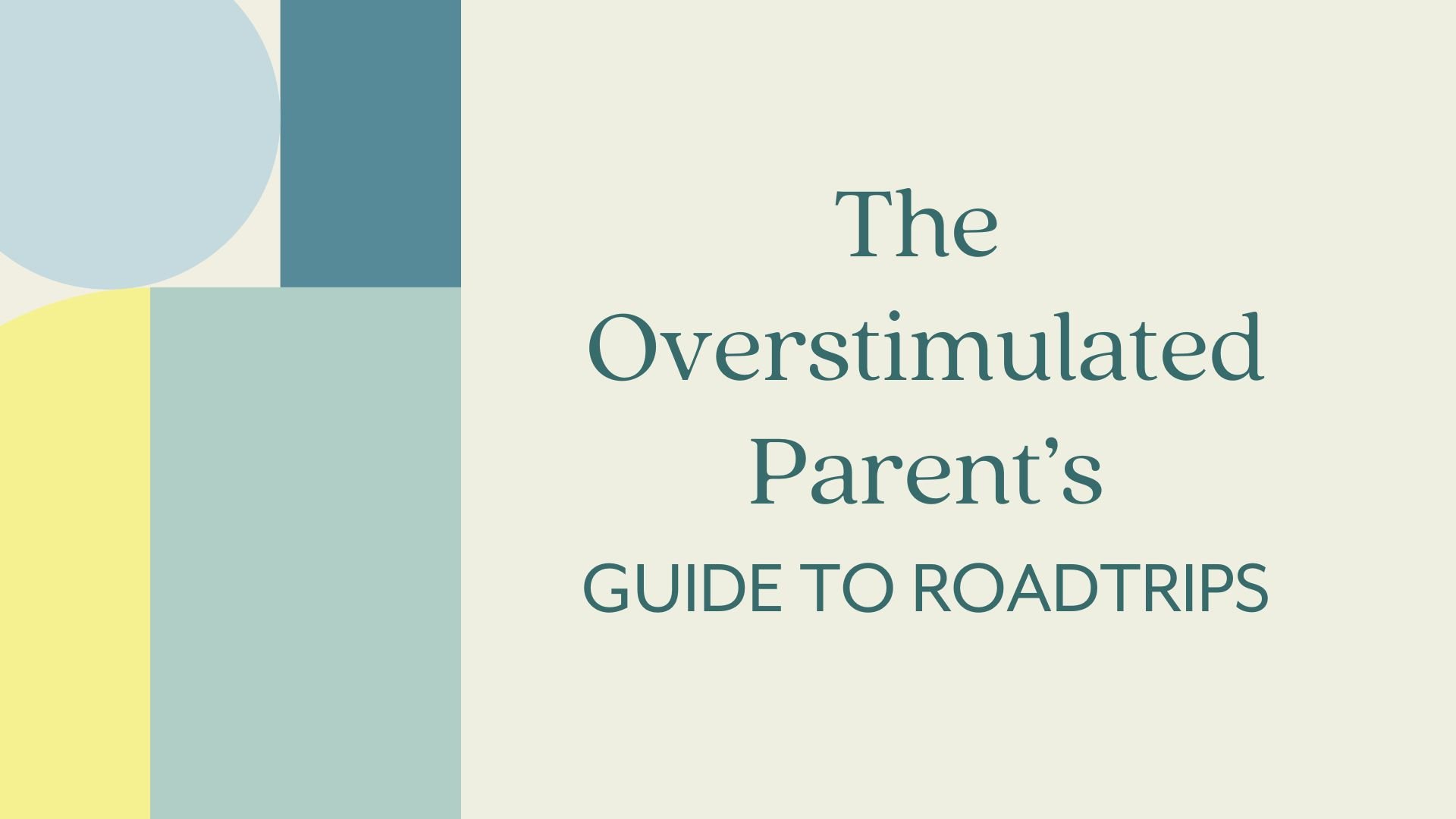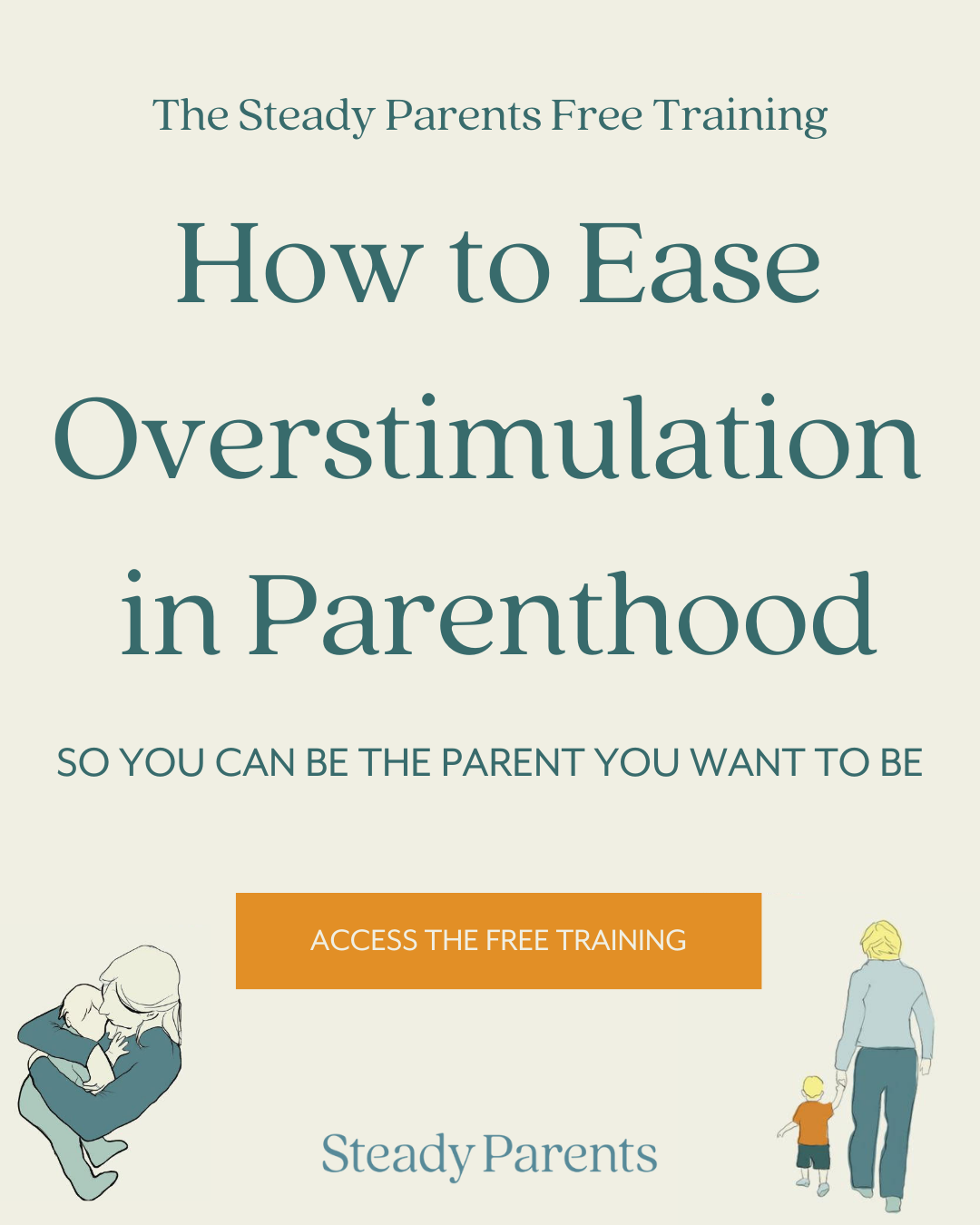Road Trip Tips to Avoid Overstimulation in the Car
Confession: I get intensely overstimulated in the car.
Why Parents Get Overstimulated in the Car
Without a doubt, one of the most commonly overstimulating situations is the car.
Of course it is!
Whether you’re going on a long road trip or simply dropping your kids off at school down the street, driving or riding in the car involves intense sensory input, coupled by the fact that you can’t leave, AND you have to focus.
Throw in a little underlying anxiety? Anyone else get a little panicky when driving across a bridge or somewhere you’ve never been before?
My goodness, it's a sensory nightmare.
If you’re the driver, you’re intensely focused on driving safely, meeting your children’s needs, tuning out their noises, explaining that you can’t just reach back and grab the toy they dropped, and repeating that you’re almost there and you can’t just go when it’s a red light.
If you’re the passenger, not only are you experiencing the movement, sounds, and sights of the road & car, you’re also the “snack monitor.” The person whose job it is to hand them snacks, reach back and grab that toy that dropped, and change the song after the first chorus of each song request.
Both roles can be incredibly difficult to manage.
So bear with me while I geek out a bit about neuroscience, and then we’ll talk about what you can do about being overstimulated in the car.
The Visual-Auditory-Vestibular Triad
These three sensory systems (visual, auditory, & vestibular - head position) work intimately together in order to give us a solid sense of safety within our body and environment. Activating one system activates the others as well.
In the car, all three of these systems are activated intensely.
Vestibular with the car movement & our head turning to check blindspots or reach back to the kids
Auditory with music, kids screaming, sirens going past, listening for cars coming behind you, and
Visual with movement outside the car, looking to adjust the radio quickly, scanning the road when merging, and so on.
This can send our nervous system into high alert. If we already have some underlying anxiety around driving, this may feel intensified simply by the sensory input the car provides.
Then our anxiety increases, making our sensitivity to sensory stimuli increase. It can be a vicious cycle, but not impossible to break!
People who are neurodivergent, have ADHD, or fall on the autism spectrum (especially children!) may have an even more difficult time managing all of the sensory input that comes from riding in the car (Cook, 2023).
(You can learn more about the association between ADHD and overstimulation in this blog post.)
These three systems are designed to keep us alert and safe but when too much sensory input is coming at us all at once, the overstimulation can become overwhelming.
Strategies for Reducing Overstimulation in the Car
The good news is that you can take proactive steps to reduce the overstimulation effects you may feel when driving in the car. Having these tools in your back pocket is especially helpful for those more prone to sensory overload.
If you didn’t get a good night’s sleep, are hungry, or have a lot on your mind on any particular day, you’ll want to have these strategies on hand.
Sensory Armor (proactive strategies)
Building up your sensory armor takes a bit of forethought, but I promise it’s worth it and will make your car shuffle much less hectic! Here are some examples to try:
Take a few moments of quiet after the kids are buckled in and the doors are shut, before you get in your seat. Every time. Breathe deeply or lean against the car to ground yourself.
Try not to rush getting into the car (I know, this one feels impossible.) But if we are already rushed, our nervous system is already in overdrive. This makes us more sensitive to stimuli. Allow for enough time to get the kids stuff packed and ask for help getting them buckled if that’s available to you. Take your time and you’ll notice a huge difference.
Sensory Overload Support (SOS) Strategies
If you’ve already reached the point where you can feel your body and mind start to ramp up, here are some strategies to bring your nervous system back down that you can use in the moment:
Hum or sing to yourself. This activates the parasympathetic nervous system, producing a relaxation effect.
Squeeze & relax your hands on the steering wheel, your shoulders up and down, or stretch & release your neck.
Put your feet on top of another bag to reduce incoming vibrations from the car into your body (if you are the passenger)
Chew gum or snacks. This provides regulating proprioceptive input and it can drown out external noises a bit.
Listen to a children's audiobook with a soothing voice.
If you are the passenger, be mindful of how you turn around towards your children. Go slow, turning one body component at a time (waist, shoulders, head & neck, eyes).
“Take a few moments of quiet after the kids are buckled in and the doors are shut, before you get in your seat. Every time.”
Conclusion
Driving has the potential to be overstimulating to everyone but especially to parents who must attend to their child’s needs as well as focus on the act of driving. This overstimulation may lead to anxiety and an increased sensitivity to sensory stimuli.
Preemptive strategies as well as in-the-moment strategies can help reduce the intensity of the sensory experience and create a calmer environment for all.
After all, the car is a place where families share memories and create special moments - who wouldn't want that vibe back! So why not try out these strategies and remember, you don't have to ride the sensory roller-coaster alone.
For more strategies for overstimulation in the car (both SOS & Sensory Armor Strategies!) , download our FREE Overstimulated Parent’s Guide to Road Trips.
PIN THIS FOR LATER:









